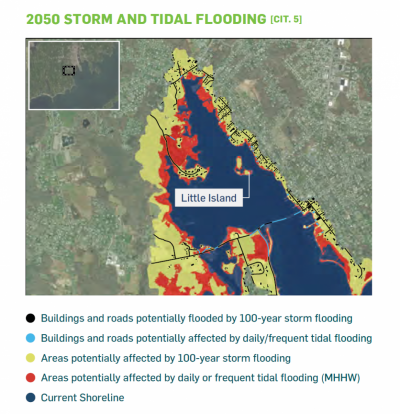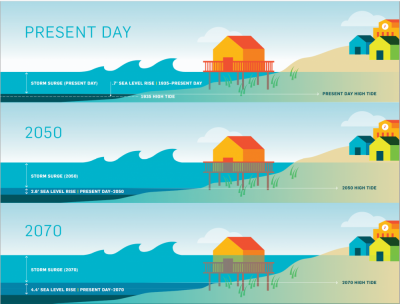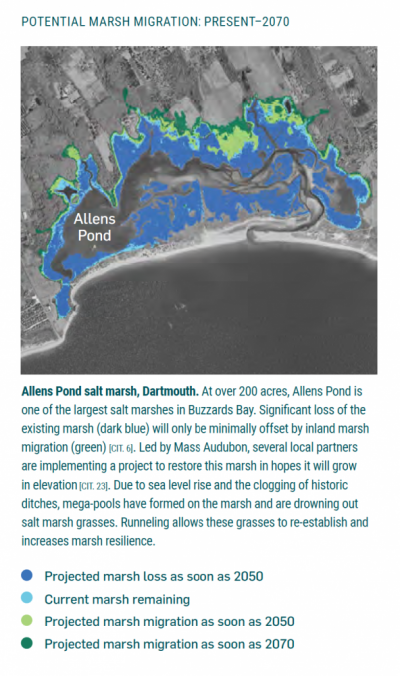Dartmouth buildings, streets in danger of future flooding, report finds
Up to 900 Dartmouth buildings and 20 miles of town roads could be at risk of major flooding in the coming decades as a result of rising sea levels and a changing climate.
That’s according to a newly-released report from Massachusetts’ largest conservation nonprofit, the Trustees of Reservations, that predicts the effects of climate change on the South Coast by 2050.
The “State of the Coast” report projects a “variety of climate impacts to both natural areas and developed areas” along the Dartmouth coast within the next 30 years, including danger to low-lying buildings and roads.
“Daily tidal flooding is projected to impact 69 buildings,” the report reads. “A 10-year flood may impact 635 buildings (3.5% of town buildings), while a 100-year flood may impact 902 buildings (5%).”
Most of the buildings and roads at high risk of flooding are located on the coast surrounding Apponagansett Bay.
Properties located near Destruction Brook were also referenced.
Specific buildings at risk of daily or frequent flooding include: The Harbormaster’s Office, several New Bedford Yacht Club buildings, and dozens of homes near the coast.
Gulf Road, Elm Street, Bridge Street, and Smith Neck Road were all cited specifically as being in danger of flooding.
Roads in danger of flooding frequently due to normal tidal changes include: the Gulf Road causeway; the northernmost stretch of Smith Neck Road up to the intersection with Gulf Road; and a small but important section of Russells Mills Road near its intersection with Cushman Lane.
In total, the report predicts that by 2050, three miles of Dartmouth roads will be at risk for daily tidal flooding, 15.6 miles will be at risk of flooding during 10-year storms (5% of town roads), and 20 miles will be at risk of flooding during 100-year storms (6%).
The report also addresses the risk of erosion to Dartmouth’s natural beaches and salt marshes.
For beaches, the report predicts only that they will see increased erosion and that seawalls, like the one in Apponagansett Park, may continue deteriorating.
Salt marshes, however, may be in particular danger, as the report notes that 86% of Dartmouth’s 1,000 acres of “critical high marsh” may be lost by flooding or converted to low marsh.
Overall, the report continues, about 30% of the town’s total marsh may be lost completely.
Areas specifically noted in relation to marsh erosion include the Buttonwood Brook Watershed, Slocum’s River Corridor, Little River Corridor, Cow Yard Salt Marsh, and Apponagansett Bay marshes.
Though the report focuses primarily on predicting the results of climate change, it does note several “resilience priorities” identified by the Town of Dartmouth.
Those priorities include using nature-based strategies to protect vulnerable areas, assessing flood resilience for critical infrastructure, strengthening bylaws for floodplain protection, and conserving land in key areas.
The full report is attached to this article.















